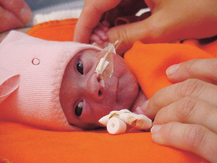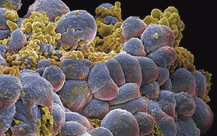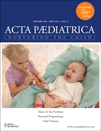Highlights in this issue
Psychiatric disorders among ex-premies

The incidence of psychiatric diseases was investigated by a register study based on about 1.5 million persons born 1974–1996. The odds rate of major psychiatric disorders was 1.88 among individuals born below 27 weeks compared to those who were born full-term. Similar ratios were found for minor psychiatric disorders or use of psychotropic drugs. The risk increased in proportion to the degree of prematurity. However, the incidence of psychiatric disorders was relatively small compared to cerebral palsy or cognitive deficits. This is reported by René Mathiasen et al., pp. 691–699. See also article by Phyllis Zelkowitz et al., showing that early intervention programmes targeting anxious mothers promote optimal developmental outcome, pp. 700–704.
Preterm infants should also sleep on the back

Prone sleeping has been found to increase oxygen saturation both in preterm infants and also adults in intensive care. However, prone sleeping should be avoided among infants, and parents can be confused if they must change the position of the baby when the preterm baby is discharged. Dawn Elder et al. have now reinvestigated oxygenation in prone and supine position. They found no disadvantage for preterm infants sleeping in supine position before discharge. See pp. 661–665.
Music in the NICU

Playing music for babies in the NICU may be pleasant but is it also good for the health? This has been investigated by Monica Olischar et al. in Melbourne. They analyzed the impact of music on the quality of sleep-wake cycles and quiet sleep in term and near-term infants. Although they did not find any statistical significance, they found a trend of easier discernibility of sleep-wake cycling among those infants who were exposed for music. Although this is a small study with a limited number of infants, it indicates that music can be good for the baby (pp. 670–675).
Solid tumours among children in Sweden

Malignant solid tumours constitute about 40% of all cancer among children. The overall annual incidence was found to be 65/million children. The survival rate has increased from 76% to 82% during the two last decades. The incidence is stable. See article by Gustaf Ljungman et al., pp. 750–757.
Placental programming of blood pressure

Malnutrition during early life alters gene expression and programmes the body structure function for life. This so called Barker hypothesis is now well established. Nicola Winder, David Barker et al. now show that the size and shape of the placental surface predict childhood blood pressure. Factors like implantation, expansion of the chorionic surface, and compensatory mechanisms may explain this (pp. 653–660).




